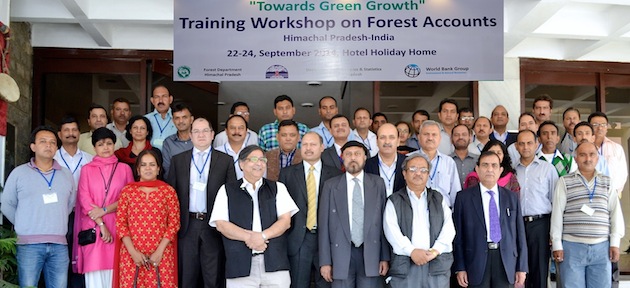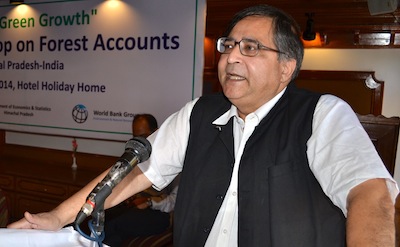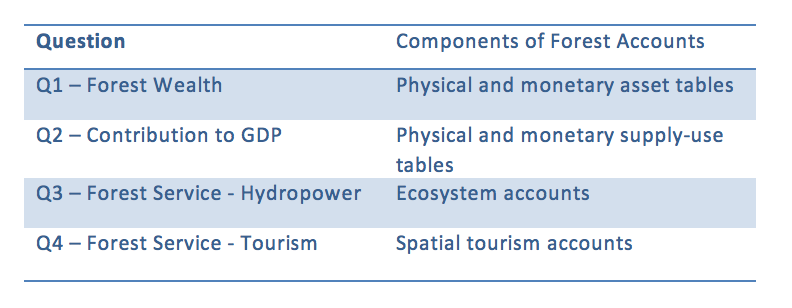By Urvashi Narain, WAVES Senior Environmental Economist
 Earlier this year, I wrote about Himachal Pradesh’s commitment to construct forest accounts. Well, Himachal is now well on its way.
Earlier this year, I wrote about Himachal Pradesh’s commitment to construct forest accounts. Well, Himachal is now well on its way. Related Links
- Training Workshop on Forest Accounts: Agenda, presentations, and press coverage
- Natural Capital Accounting in Himachal Pradesh - Feasibility and Planning Study
- Notes from the Field: High in the Himalayas, a Commitment to Capture Forests' Value
- Green National Accounts in India - A Framework
- Counting Forests as More than the Sum of Trees

Institutional and management arrangements are probably the cornerstone of building forest accounts in any state or country. These include not only establishing mandates for forest accounts to be part of work programs of appropriate government departments, establishing formal data sharing and data reporting arrangements, but also establishing a high-level steering committee that can oversee the process and facilitate policy dialogue.
Compilation and policy analysis are two separate, but inter-related, components. The first component is focused on providing the basic data and indicators, while the second on using the data to inform policy. It is important that the accounts be compiled to address key policy questions, because the accounts are more likely to be institutionalized if the information they provide is demanded.
Capacity building is achieved by learning-by-doing and formal training and should aim at the two key aspects, the users’ side (policy applications) and the suppliers’ side (technical compilation and database management). Finally, through regular communication government can provide information to key stakeholders and also disseminate information that can be used to inform policy.
- Q1: What is the forest wealth (physical and monetary stock of timber) of Himachal Pradesh? How has this evolved since 1971 (when Himachal was granted statehood)?
- Q2: What is the contribution of timber and non-timber forest products to the state GDP, how are these benefits distributed, and how can they be increased sustainably?
- Q3: What is the value of forest ecosystem services to the hydropower sector and how can these be optimized?
- Q4: What is the contribution of forests to the tourism sector in the state and how can these be increased sustainably?

Participants spent time identifying what components of forest accounts would need to be compiled to answer their questions (shown in the table above) and outlining a timeline for the work.
The workshop started the process of capacity building and is the first of a series of face-to-face trainings that will be organized. Nothing, of course, will be as critical to the process of building capacity as learning-by-doing, as government officers begin to compile the accounts.
Finally, communications. Again, the workshop served the purpose of creating greater awareness for the work on forest accounts. We saw growing interest on the topic from the media. You can read a range of press coverage on the issue.
